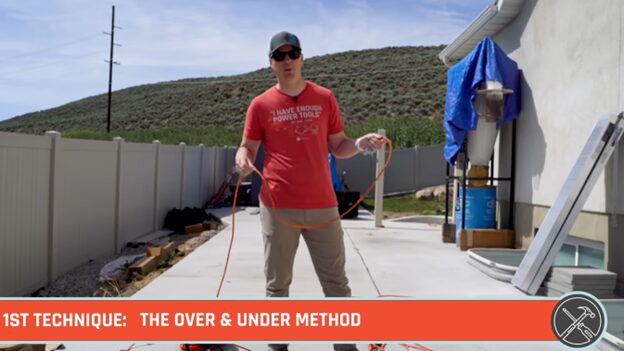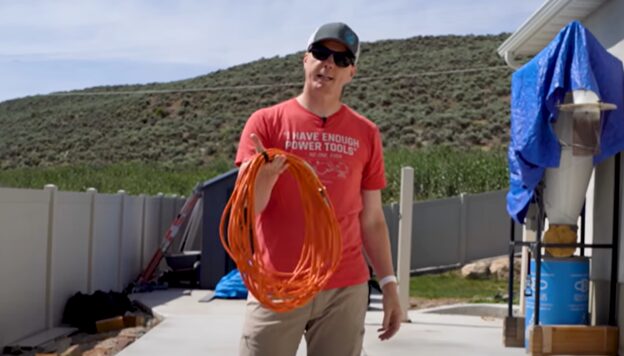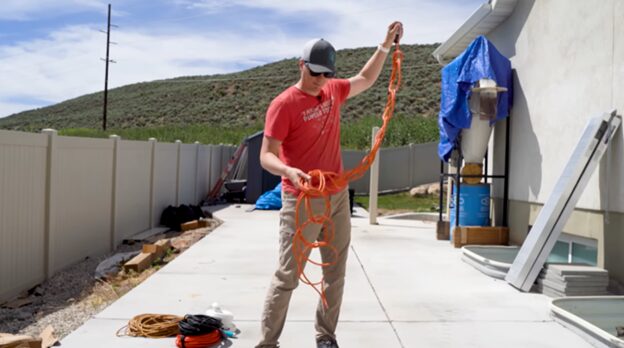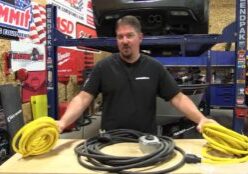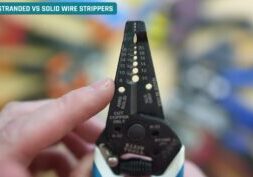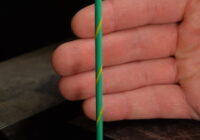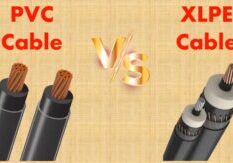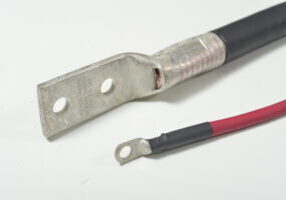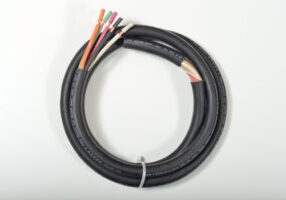
Aug 18, 2024
Pro Tips for Wrapping Extension Cords Including the Daisy Chain
Properly wrapping portable extension cords is essential for their longevity, ease of use, and organization. Poorly stored cords, cables, and hoses can lead to tangles, damage, and frustration when you need to use them. Wrapping them correctly helps prevent damage, reduces tripping hazards, and ensures that they are ready to use when needed. Here, we’ll explore the importance of wrapping these items and outline several techniques to do it properly.
0:00 – Don’t wrap this way
1:00 – Over under technique
4:25 – Hose over under technique
5:40 – Chain technique
Importance of Proper Wrapping
- Prevents Tangling and Kinking: Improperly stored cords and hoses are prone to tangling and kinking, which can cause internal damage or make them difficult to use. Tangled cords are not only inconvenient but can also lead to safety hazards, especially when electricity is involved.
- Extends Longevity: Consistently wrapping and storing cables, cords, and hoses in a manner that minimizes wear and tear will help extend their lifespan. Avoiding sharp bends, tight knots, and excessive tension ensures that the internal wires or tubing remain intact.
- Enhances Safety: Properly wrapped and stored extension cords, cables, and hoses reduce the risk of tripping hazards. For instance, leaving a hose loosely strewn across a yard or an extension cord in a workspace can lead to accidents.
- Facilitates Ease of Use: A neatly coiled hose or cable is much easier to use and transport. Instead of dealing with a jumbled mess, you can simply unwind the desired length and put it to use.
- Promotes Organization: Whether in a home, workshop, or job site, keeping cords, cables, and hoses properly wrapped and stored helps maintain a clutter-free and organized environment. It also makes it easier to locate the item when needed.
General Wrapping Techniques
There are several techniques to wrap extension cords, cables, and hoses. The method you choose will depend on the length, thickness, and intended use of the item. Here are some of the most effective and commonly used methods:
- The Over-Under Wrap Method
The “Over-Under” method is widely used for extension cords and cables, especially in professional settings like audio-visual or entertainment industries. This technique helps prevent twists and kinks from forming in the cord.
How to Perform the Over-Under Wrap:
- Start by holding the cord or cable in one hand, with one end dangling.
- Create the first loop by wrapping the cable overhand in a circular motion.
- For the second loop, twist the SOOW cable in the opposite direction (underhand), allowing the natural twist in the cable to guide you.
- Continue alternating between overhand and underhand loops until the entire cable is wrapped.
Advantages:
- Prevents kinks and tangles.
- Keeps the cable or cord in a neutral, stress-free state.
- Quick to unwind.
This method is particularly useful for heavy-duty extension cords or cables that are often used in industrial or outdoor settings.
- The Coil and Twist Method
The “Coil and Twist” method is a simple, yet effective way to wrap hoses, cables, and cords. This is especially beneficial for items that may have a natural curve, such as garden hoses or thicker cables.
How to Perform the Coil and Twist Method:
- Start by holding one end of the cord or hose and letting it hang freely.
- Coil the item in a large loop, ensuring that each loop follows the natural curvature of the material.
- As you create each loop, twist the item slightly to prevent kinking and to maintain a smooth coil.
- Continue until the item is fully wrapped, and secure the loops with a Velcro strap or tie.
Advantages:
- Ideal for thicker hoses and cables.
- Maintains the natural shape and prevents kinking.
- Easy to secure and store.
This method is particularly effective for garden hoses and air hoses that can be prone to tangling if stored improperly.
- The Figure-Eight Wrap
The “Figure-Eight” wrap is a great method for storing longer cords, ropes, or hoses. It distributes the tension evenly across the length of the item, reducing stress on specific points and preventing knots.
How to Perform the Figure-Eight Wrap:
- Start by holding one end of the cord or hose in one hand.
- Loop the cord in a figure-eight pattern by alternating the direction of the loops (similar to a crisscross).
- Continue looping in this pattern until the entire cord is wrapped.
- Once finished, tie off the loops with the end of the cord or a secure strap.
Advantages:
- Evenly distributes tension.
- Prevents tangles and knots.
- Ideal for long cords or hoses.
This method is highly recommended for climbing ropes, extension cords that are frequently transported, and any long cable or hose that requires regular use.
- The Contractor’s Wrap (Also Known as the “Daisy Chain” Wrap)
The Contractor’s Wrap is a method used by professionals in construction and other heavy-duty fields to quickly wrap and unwrap extension cords and cables, also known as SJOOW cord. This method reduces the risk of knots and tangles while keeping the cords compact.
How to Perform the Contractor’s Wrap:
- Begin by holding the cord in both hands and folding it in half.
- Continue folding the cord in half until it’s a manageable length (usually 2-3 feet).
- Starting from the center of the folded cord, tie a loose knot and continue looping the remaining length through the knot until you reach the ends.
- Once complete, tuck the ends into the final loop to secure the wrap.
Advantages:
- Compact and portable.
- Prevents knots.
- Easy to unwind.
This method is especially useful for extension cords used on job sites and other environments where quick deployment and storage are necessary.
- The Hose Reel
For garden hoses and air hoses, using a hose reel is one of the most effective methods for storage. Hose reels come in various sizes and designs, including wall-mounted, portable, or retractable options.
How to Use a Hose Reel:
- Attach one end of the hose to the reel, ensuring that it’s securely fastened.
- Slowly turn the reel, guiding the hose into neat, even coils as it wraps around the drum.
- Once the entire hose is coiled, secure the end and store the reel in a dry, safe location.
Advantages:
- Prevents kinks and tangles.
- Protects the hose from the elements.
- Convenient and space-saving.
Hose reels are ideal for long garden hoses, air compressor hoses, and any hose that needs to be regularly extended and retracted.
Tips for Storing Wrapped Cords, Cables, and Hoses
- Use Cable Ties or Velcro Straps: To keep wrapped cords and cables secure, use reusable cable ties or Velcro straps. This prevents them from uncoiling and keeps them neat in storage.
- Hang When Possible: Hanging wrapped cords, hoses, or cables on hooks, pegboards, or wall-mounted storage solutions prevents them from getting tangled or damaged by being stacked with other items.
- Avoid Tight Bends: Ensure that the cord or hose isn’t wrapped too tightly, as this can cause internal damage. Bending wires and hoses too sharply over time can lead to kinks and weak points.
- Keep Dry and Protected: For garden hoses or extension cords used outdoors, make sure they are stored in a dry place to prevent moisture damage or rusting of metal components.
- Label Cords and Cables: If you have multiple cords or cables that look similar, label them for easy identification. This is particularly useful for electrical extension cords, computer cables, or any specialized cords.
- Avoid Overheating: Never wrap extension cords or cables that have been recently used with high-wattage appliances. Allow them to cool down before wrapping to prevent overheating and potential damage to the insulation.
Conclusion
Properly wrapping and storing extension cords, cables, and hoses may seem like a small task, but it plays a significant role in their functionality, safety, and longevity. From the Over-Under Wrap for cables to the Hose Reel for garden hoses, there are numerous techniques designed to prevent tangles, kinks, and wear and tear. Each method can be selected based on the type of material you are working with and the frequency of use. By investing a little time in wrapping and storing these items correctly, you can save yourself from unnecessary frustration, extend the life of your equipment, and maintain a more organized workspace or home environment.

